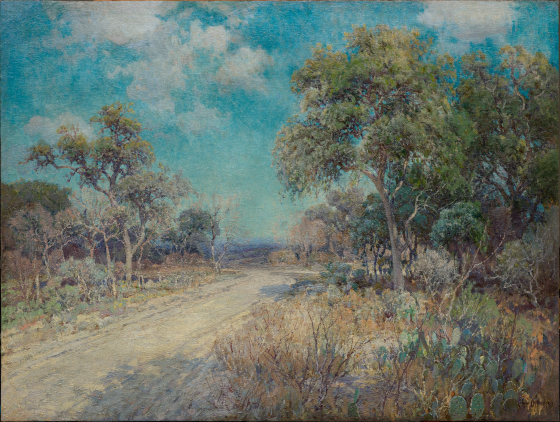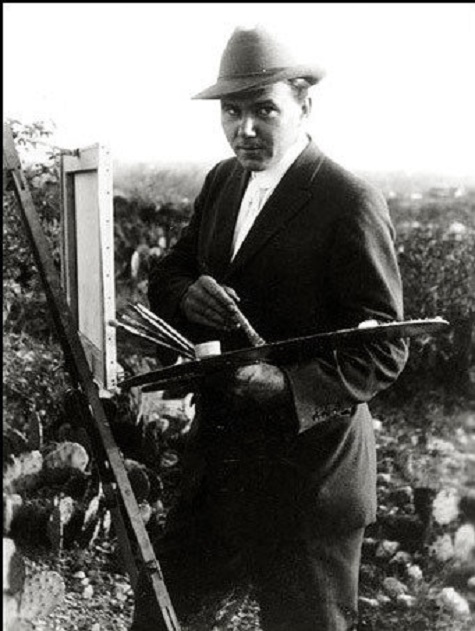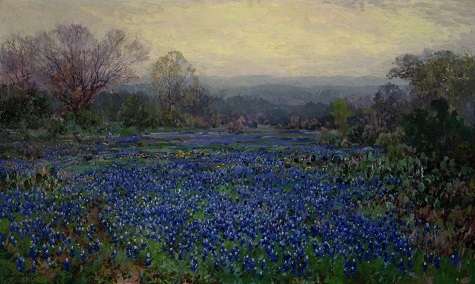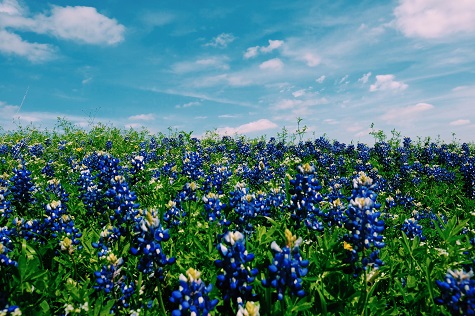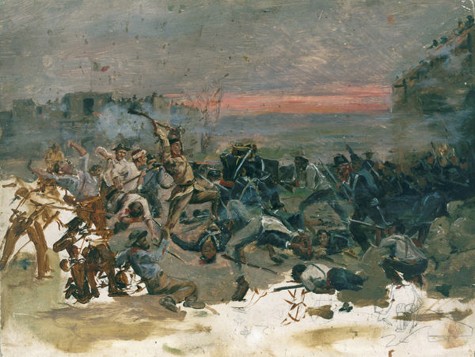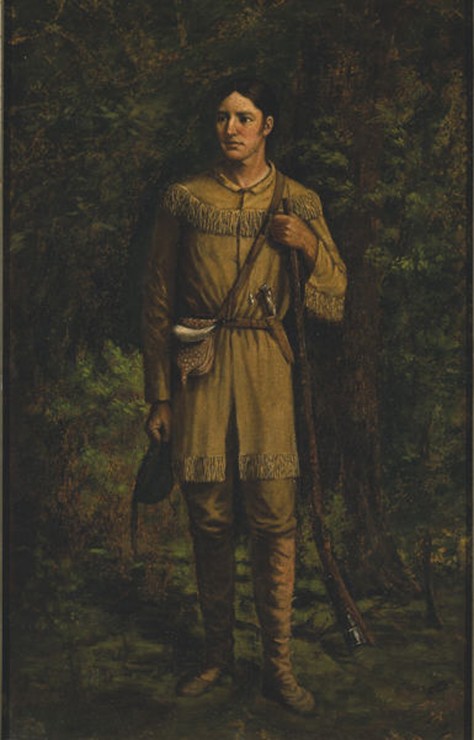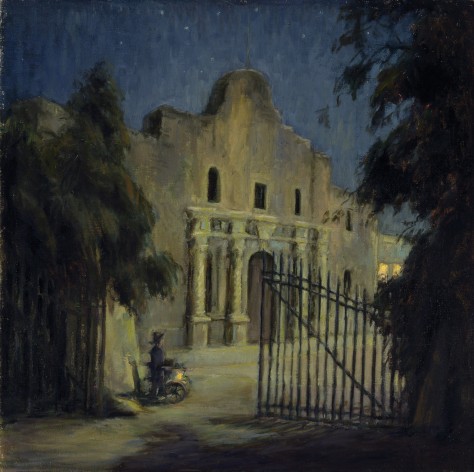While using the archives for a small research project (more on that in a future post), I was reminded of one of the Dallas Art Association’s (DAA) founding members, Elizabeth Patterson Kiest (Mrs. Edwin J. Kiest). Mrs. Kiest attended the first meeting of the group of art supporters that formed the DAA on January 19, 1903 and she served as DAA Treasurer from its inception to her death in 1917, a century ago this year.
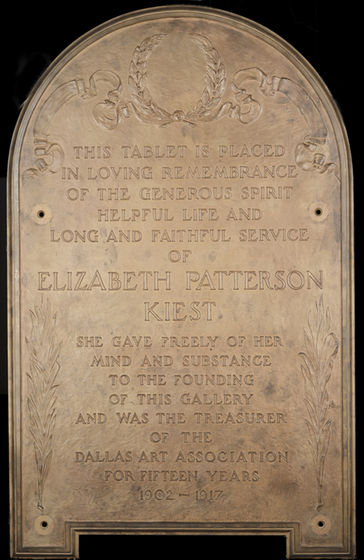
Bronze plaque in honor of Elizabeth Patterson Kiest for her long service as founder and Treasurer of the Dallas Art Association.
The Kiest Memorial Fund was established in her honor, with a plaster cast of Winged Victory as the first purchase. (The piece is no longer in the collection.)
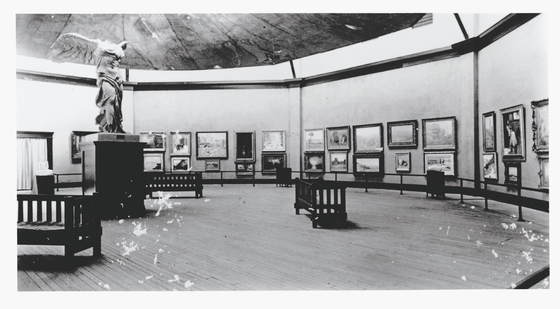
An interior view of the Free Public Art Gallery space in the Textile and Fine Arts Building, with the plaster cast of Winged Victory in the upper left.
Beginning in 1932 the Kiest Memorial Fund was used to fund a purchase prize for the annual Dallas Allied Arts exhibitions, from which works by major Dallas artists were acquired for the collection including Jerry Bywaters, Otis Dozier, De Forrest Judd, Everett Spruce, Charles T. Bowling, Allie Tennant, Perry Nichols, Donald S. Vogel, William Lester, and Octavio Medellin.
In addition to the DAA, Mrs. Kiest was involved in a number of civic and women’s clubs, the foremost being the Dallas Shakespeare Club and the Matheon Club. The Dallas Shakespeare Club would later donate Road to the Hills by Julian Onderdonk to the Museum in memory of Mrs. Kiest.
Hillary Bober is the Archivist at the Dallas Museum of Art.
